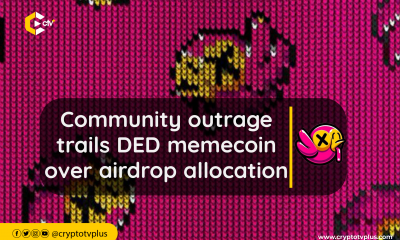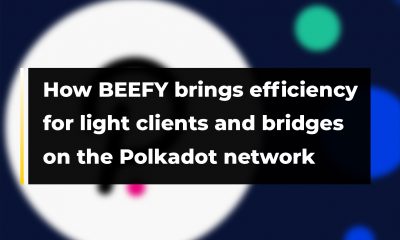FEATURED
The future of blockchain interoperability: Parity’s XCM protocol

Norbert Tulbure, Tech Project Manager at Parity Technologies, unveiled an innovative solution for blockchain interoperability during the Sub0 conference.
Norbert shared insights into the limitations of blockchain interoperability and how Parity Technologies is addressing these challenges with its innovative solution.
He began by acknowledging the frustration many in the industry likely felt about the isolated nature of most blockchains. He revealed the need for effective means of communication between different blockchain networks to create a multi-chain universe, akin to an “internet of blockchains.”
Norbert emphasized that this interconnected ecosystem would enhance shared security, and scalability, and facilitate seamless asset transfers. To achieve this vision, he introduced the concept of trustless bridges.
Trustless bridges
These bridges are decentralized mechanisms that allow for secure and seamless asset or data transfers between different blockchain networks without relying on intermediaries or centralized entities.
He noted the importance of trustlessness in the current blockchain landscape, where third parties often collect fees and serve as single points of failure.
Blockchain bridges serve as tools facilitating communication and asset movement between different blockchain networks. They are necessary to enable cross-chain interoperability, which is the ability to transfer data and assets across different blockchains.
These bridges work just like physical bridges, connecting two blockchain ecosystems. They provide seamless transactions between popular blockchain networks, and every bridge has a different approach to operations.
Norbert further explained that trustless bridges prioritize verifiability, allowing users to confirm each step of the process independently. Validators, relayers, consensus mechanisms, and cryptographic proofs play crucial roles in ensuring the security of these bridges.
XCM trustless bridge
Further into the presentation, he revealed XCM, the protocol created by Parity Technologies to enable cross-chain communication.
XCM allows blockchains, whether they are within or outside the Parity ecosystem, to interact and share information or value without relying on centralized intermediaries.
Norbert noted that XCM is designed to work with various blockchain types, including parachains, parathreads, or different consensus blockchains.
He also introduced Bridge Hub, a system that is used to manage several bridges in its ecosystem. Bridge Hub’s role is to host bridges and related pallets in the runtime.
It ensures that bridges are trustless and transparent and serve as transport mechanisms for other parachains to build cross-consensus applications.
Polkadot and Kusama bridge
The presentation also covered two essential layers of the Polkadot and Kusama bridge: the transport layer and the Dapp layer.
The transport layer is a low-level implementation with high-security guarantees, while the Dapp layer allows for the execution of cross-consensus XM programs.
The speaker went on to demonstrate a use case involving asset transfers between Polkadot and Kusama, explaining how foreign asset pallets simplify asset management.
He clarified that dynamic fees based on message weight and Bridge Hub’s load would be implemented to prevent exploitation.
He concluded by announcing the imminent launch of the bridge and encouraged the audience to explore it once it’s released.
Read also; Integritee AG unveils innovative cross-chain privacy solution

























1 Comment